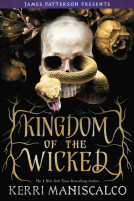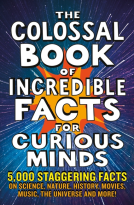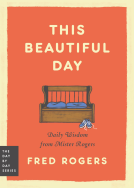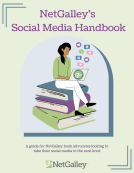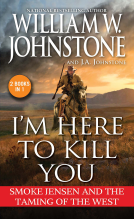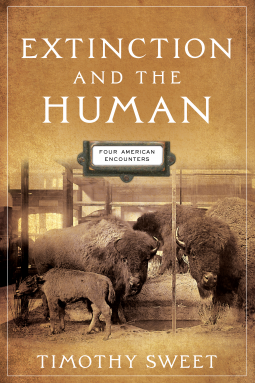
Extinction and the Human
Four American Encounters
by Timothy Sweet
This title was previously available on NetGalley and is now archived.
Send NetGalley books directly to your Kindle or Kindle app
1
To read on a Kindle or Kindle app, please add kindle@netgalley.com as an approved email address to receive files in your Amazon account. Click here for step-by-step instructions.
2
Also find your Kindle email address within your Amazon account, and enter it here.
Pub Date Oct 08 2021 | Archive Date Aug 31 2021
Talking about this book? Use #ExtinctionandtheHuman #NetGalley. More hashtag tips!
Description
The Americas have been the site of two distinct waves of human migration, each associated with human-caused extinctions. The first occurred during the late Pleistocene era, some ten to thirty thousand years ago; the other began during the time of European settler-colonization and continues to this day.
In Extinction and the Human Timothy Sweet ponders the realities of animal extinction and endangerment and the often divergent Native American and Euro-American narratives that surround them. He focuses especially on the force of human impact on megafauna—mammoths, whales, and the North American bison—beginning with the moments that these species' extinction or endangerment began to generate significant print archives: transcriptions of traditional Indigenous oral narratives, historical and scientific accounts, and literary narratives by Indigenous American and Euro-American authors. "If the Sixth Extinction is a hyperobject, an event so massively distributed in space and time that it cannot be experienced directly," he writes, "these cases of particular megafauna have nevertheless consistently commanded our focus and attention. They form a starting point for a coherent, approachable history."
Reflecting on questions of agency, responsibility, and moral assessment, Sweet engages with the consequences of thinking of humans as fundamentally separate from the rest of the natural world. He investigates stories of a lost race of giants at the time of the first encounters between Europeans and Indigenous Americans; culturally distinct ways of understanding the extinction of the mammoths; the impact of the Euro-American whaling industry and the controversial revitalization of Native American whaling traditions; and the bison's near-extermination at the hands of white market hunters and today's Euro-American and Native American efforts on behalf of the animal's preservation. He reflects on humans' relations with animals through models of divine preservation, competitive extermination, evolutionary determination, biophilia, and treaties with animals. Ultimately, he argues, it is the critical assessment of ideas of human exceptionalism that provides a necessary counterpoint both to apologies for human mastery over nature and deep ecology's attempts to erase the human.
Advance Praise
"Timothy Sweet has deep experience thinking about the intersection of American environmental, cultural, and intellectual history, from the first decades of European colonization through the nineteenth century. He is perfectly prepared to tackle questions around megafauna extinction narratives and debates in the Americas. Extinction and the Human is compelling, learned, wide-ranging, trustworthy, and thorough.
—Susan Scott Parrish, University of Michigan
"Timothy Sweet has written a richly researched, theoretically sophisticated, and ultimately engrossing book. Filled with scenes of literary and cultural exchange, his accounts of the near or complete extinction of mastodons, whales, and bison have the power to stop us in our tracks, forcing us to rethink the roles and relationships of the human and nonhuman in new, sometimes visceral ways."
—Randall Fuller, University of Kansas
Available Editions
| EDITION | Other Format |
| ISBN | 9780812253429 |
| PRICE | $37.50 (USD) |
Featured Reviews
Since learning about the extinction of the Tasmanian tiger, I have been obsessed with the animals that humans have tragically led to their downfall. This book is heartbreaking, informative and a very needed wakeup call for so many of us as we continue to destroy natural lands and the creatures that call them home.
 Account D, Reviewer
Account D, Reviewer
i really enjoyed reading this, it was a great nonfiction book about humans and animals. It was a beautifully done book and I enjoyed the journey.
 Bill C, Reviewer
Bill C, Reviewer
Extinction and the Human, by Timothy Sweet, is a thoughtful, philosophical exploration of the human role in extinction, the ways in which we honestly (or not) look in the mirror (or not) with regard to that role, and how our attitudes toward that role, when we acknowledge, change over time. As the introduction puts it: “Humans have been causing extinctions for about as long as we have been humans. We have not, however, always understood or admitted this, nor have we always felt it was wrong or sad.” The focus is on the Americas and especially on megafauna, in particular mammoths, whales, and bison.
The book opens more in philosophical mode, with an examination of several concepts, such as human exceptionalism, which he defines as “any account of a distinction between humans and nonhumans that we use to deal with a troubling practice or to negotiate difficulties concerning our relation to nonhumans. One of the major ways the Western view of exceptionalism (which is not limited to the West) differs is the way in which the West views Nature and History separately. With regard to history, he takes as the starting point for each creature examined the point at which their extinction (or looming extinction) begins to “generate significant print archives.” This does not neglect oral histories, however, for included in those archives is an entire body of transcriptions of such. Another concept explored in the early stages are the “ecological Indian (akin to the more familiar “Noble Savage”), which, amongst several problematic results, “suspends Native Americans in a timeless past rather than recognizing them as historical actors.” Sweet also raises the idea, from writer Aldo Leopold, of the “Land Ethic”, which generally has humans see “land as a community to which we belong . . . chang [ing] the role of Homo sapiens from conqueror ... to citizen.” The first section of the book further explores foundational philosophical/cultural theories regarding our relationships with the land and the animals that are part of it.
The next segment is a look at the early beliefs (or, in the earliest stage, disbelief) with regard to extinction as a historical reality and the role of humanity in it. Many of the names will be familiar to those who read on this topic or just generally about the history of science: Cuvier, Lyell, Hooke, etc. As one would expect after the introduction, Sweet doesn’t limit himself to European naturalists; we also see indigenous peoples’ ideas regarding the strangely large bones they’d uncovered or the concept of extinction. After this section, each chapter takes a detailed look at the aforementioned megafauna. These sections are absolutely fascinating (even if at one point I noted in the margins Sweet was perhaps spending an inordinately long time on Moby-Dick), and if any readers of popular science found the opening chapters to be too heavily based in philosophical concepts, they just absolutely press on (or skip forward if they feel the need) to these segments. Sweet offers up a wealth of detail and thoughtful, insightful commentary, both his own and those of others. The book is more academic and abstract than a lot of popular science works, so readers used to the more conversational tone of, say, a Mary Roach, might balk a bit, but it’s well worth the read and highly recommended.
 Denice L, Reviewer
Denice L, Reviewer
An excellent look at the impact humans and their ideas of "civilization" have brought to bear throughout history. Every instance in the current era can be back traced to small steps taken before anyone gave consideration to their consequences. Timothy Sweet follows the wide path of clues left as each population surge pushed animal and plant life aside, reducing their numbers to the point of extinction. The information shared in this book will stir many more to action.....definitely a great result.
Readers who liked this book also liked:
Jodi Picoult; Jennifer Finney Boylan
General Fiction (Adult), Literary Fiction, Women's Fiction
Nigel Henbest; Simon Brew; Sarah Tomley; Ken Okona-Mensah; Tom Parfitt; Trevor Davies; Chas Newkey-Burden
Entertainment & Pop Culture, Humor & Satire, Nonfiction (Adult)
Cynthia Leitich Smith; Kate Hart; Eric Gansworth; Marcella Bell; Darcie Little Badger; Karina Iceberg; Kaua Mahoe Adams; Andrea L. Rogers; Cheryl Isaacs; Christine Hartman Derr; Brian Young; K. A. Cobell; Jen Ferguson; A. J. Eversole; Byron Graves; Angeline Boulley; David A. Robertson
Children's Fiction, Multicultural Interest, Teens & YA
William W. Johnstone; J.A. Johnstone
General Fiction (Adult), Historical Fiction
